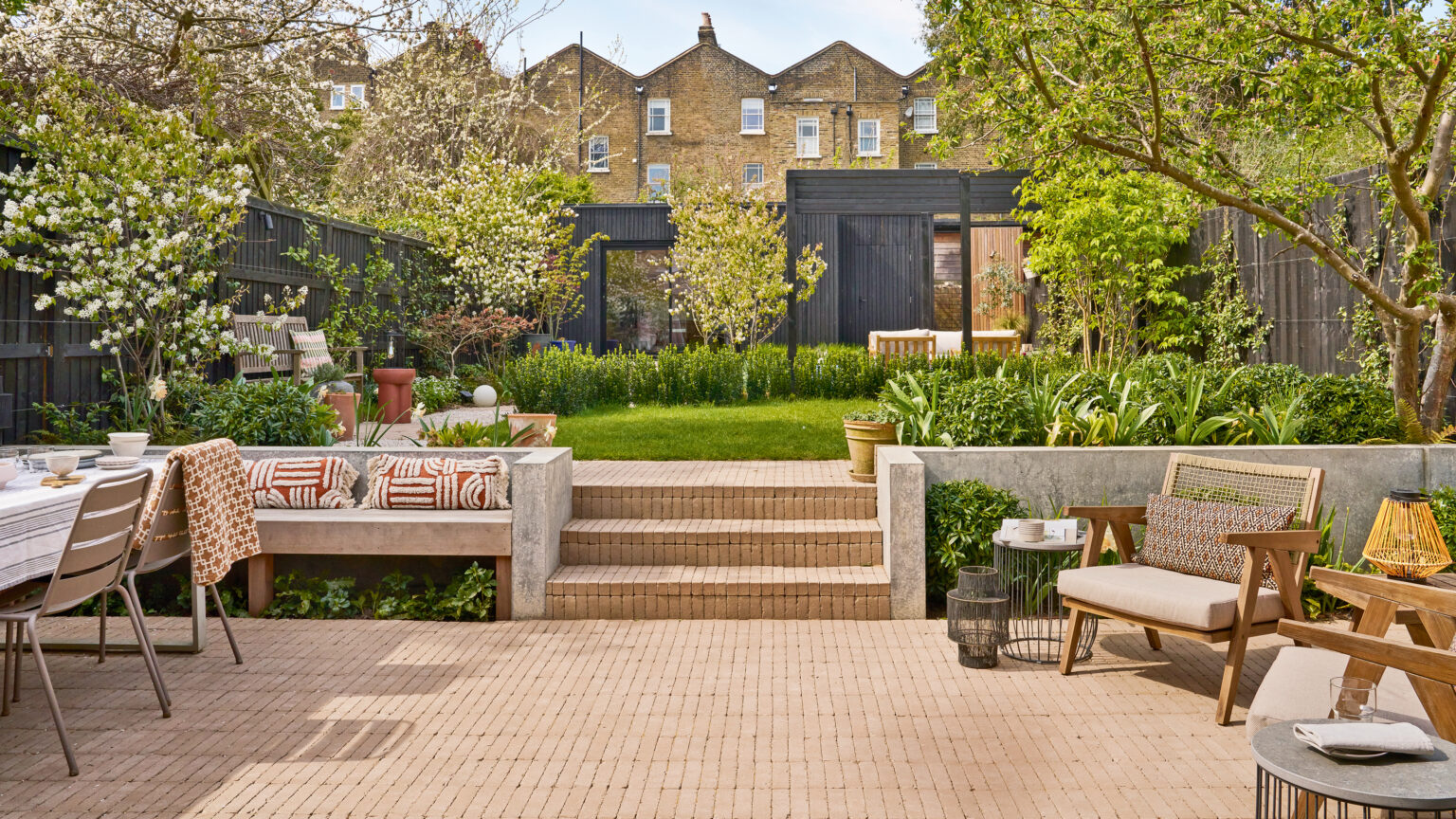The end of spring or the start of summer feels like the most natural time to tend to your garden furniture. However, as we head into autumn, now is the ideal time to clean and protect your garden furniture. This can be done with an oil, anti-rust spray, or a furniture cover, depending on the type of garden furniture you have.
If you don’t do this one straightforward job on your garden furniture in September, trust me, you will regret it. Failing to clean and protect your metal, wood, rattan or plastic garden furniture now will result in a deeply upsetting sight come springtime: think cracked wood, rust, spots, faded fabrics, and sad cushions that smell suspiciously of mildew.
Yes, it’s one of the autumn garden tips that pros keep on hammering home; don’t forget about your outdoor furniture! Because, with just a little prep this month, you can save yourself the cost (and hassle) of replacing pieces next year.
‘As temperatures drop and wetter weather sets in, taking a little time now to protect your outdoor furniture will ensure it remains as good as new for many more summers to come,’ says James Bentley, Director at British garden furniture supplier Charles Bentley.
‘But different materials require different levels of care, so here’s how to keep yours in top condition.’
Wood garden furniture
Hardwood furniture, such as teak and oak, can withstand the elements better than softer woods, but even wooden garden furniture in September needs some TLC and protection with a protective oil and furniture cover.
‘Before winter sets in, give surfaces a clean with warm soapy water and allow them to dry fully. Applying a protective oil or sealant will help guard against moisture damage and minimise cracking,’ says James.
‘If possible, store wooden furniture in a shed or garage, or use a breathable cover that allows air circulation.’ Which means, basically, avoid heavy tarpaulins that trap condensation and encourage rot.
Something like Amazon’s Osmo Garden Furniture Oil Clear Satin 028 1 Litre and the Pacific Aerocover Rectangular Garden Table Furniture Cover from John Lewis should do the trick nicely.
Metal Garden Furniture
Aluminium and stainless steel are generally low-maintenance options when it comes to garden furniture in September. Still, powder-coated finishes can chip, exposing metal to rust, so you need to clean metal garden furniture and protect it with an anti-rust spray and cover.
‘Wipe down frames to remove dirt and salt residue, then touch up any scratches with specialist paint. And, for wrought iron, apply a thin coat of car wax or anti-rust spray for an added barrier,’ says James.
‘Again, covering is recommended, but avoid non-breathable plastics which can trap condensation.’ Which means, yes, the key is preventing water from sitting on surfaces through long, wet months.
Try JENOLITE Rust Shield Clear Lacquer Spray, 400ml, Rust Prevention Spray, £14 from Amazon to help you with all of this.
Rattan and Wicker Garden Furniture
Rattan and wicker are stunning options, and standout materials in all of the best places to buy garden furniture. However, natural rattan doesn’t fare well in damp conditions, so it should ideally be stored indoors over winter as the best method of protection.
‘Even synthetic rattan, which is more resilient, will still benefit from being covered,” says James. ‘Before storage, clean with a soft brush and mild detergent to prevent mildew forming.’ Try something, then, like a neutral soap like the Frosch Neutral Cleaner from Amazon.
If space is tight, grouping rattan pieces together and raising them slightly off the ground can reduce moisture exposure – saving you from sagging seats and fraying stands when the weather warms up come springtime.
Plastic and Resin Garden Furniture
If you have plastic or resin garden furniture in September, James notes that this ‘durable and lightweight material is less prone to weather damage’.
‘Still, it can become brittle and discoloured. Cleaning with mild soap and water before covering or storing helps keep it looking fresh,’ he adds.
Try storing them indoors if possible; plastic chairs and loungers stack neatly, so take advantage of that to save storage space. Keep them out of prolonged direct sunlight if possible, as UV rays can fade and weaken even the toughest resin furniture.
Cushions and fabrics
When it comes to prepping garden furniture in September, the protection needs to extend to your cushions and any fabrics. These are the parts that will really suffer from the autumn and winter weather if not cleaned and then protected properly.
‘Always store cushions and fabric accessories indoors,’ says James, who stresses that ‘even weather-resistant fabrics will deteriorate faster if left exposed to frost and persistent damp’.
‘Before the weather turns, give them a wash and let them dry fully before putting them away for the winter,’ he adds, noting that there is a large range of breathable furniture covers at Charles Bentley to use for exactly this purpose.
What garden furniture can be left outside all year?
If you want garden furniture that can be left outside all year, you need something made from a hardwood like teak or oak, or even a good-quality metal such as aluminium or stainless steel, as they’re built to withstand the elements.
‘That said, I always recommend giving everything a bit of protection before winter sets in,’ says Christopher O’Donoghue of Gardens Revived.
‘A breathable cover makes a huge difference, and even the toughest materials will last far longer if you can store them in a shed or garage over the wettest months.’
Sometimes, we still use our garden furniture in September, but recent rainfall and fierce storms have made the image of an al fresco dinner in the golden autumn sun a little… well, a little less appealing.
So arm yourself with all the tools you need and set to work ideally, before the next big rain cloud bobs over…
Read the full article here
